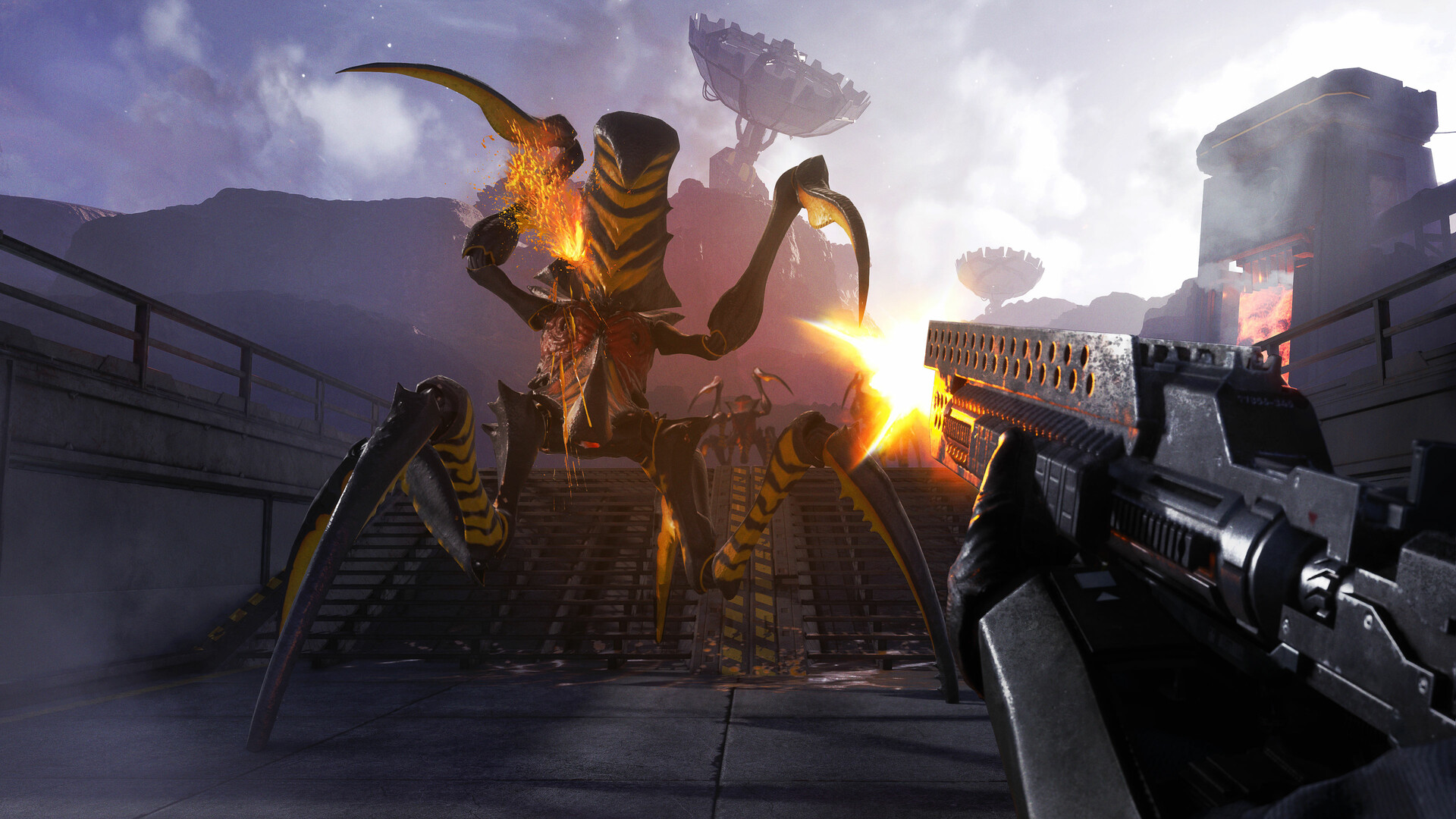
What is? Cooperative multiplayer shooter based on Paul Verhoeven's 1997 film.
Release date October 11, 2024
Expect to pay $50/£40
Developer Offworld
Publisher Offworld
Reviewed on AMD Ryzen 5 3600, Nvidia 2080 Super, 32 GB RAM, Windows 10
Steam Deck Unsupported
Link Official site
If you're thinking about comparing Starship Troopers: Extermination to Helldivers 2, stop right there. Sure, they're both cooperative multiplayer shooters that involve blasting thousands of alien bugs, each inspired by Paul Verhoeven's 1997 satirical sci-fi flick. But apart from that, they're totally different games. Helldivers 2 is a surgically precise slapstick comedy, its goofy sci-fi action driven by pristine physics, immaculate ballistics, and its phenomenally satisfying Stratagems. Extermination is a much broader, weirder, rougher affair, one that in many ways has loftier ambitions, yet only a fraction of the budget to execute with.
Often the results of this are fair to middling, while parts of Extermination are outright terrible. Yet when all of its ideas come together, its action is every bit as thrilling as Arrowhead's fascist farce.
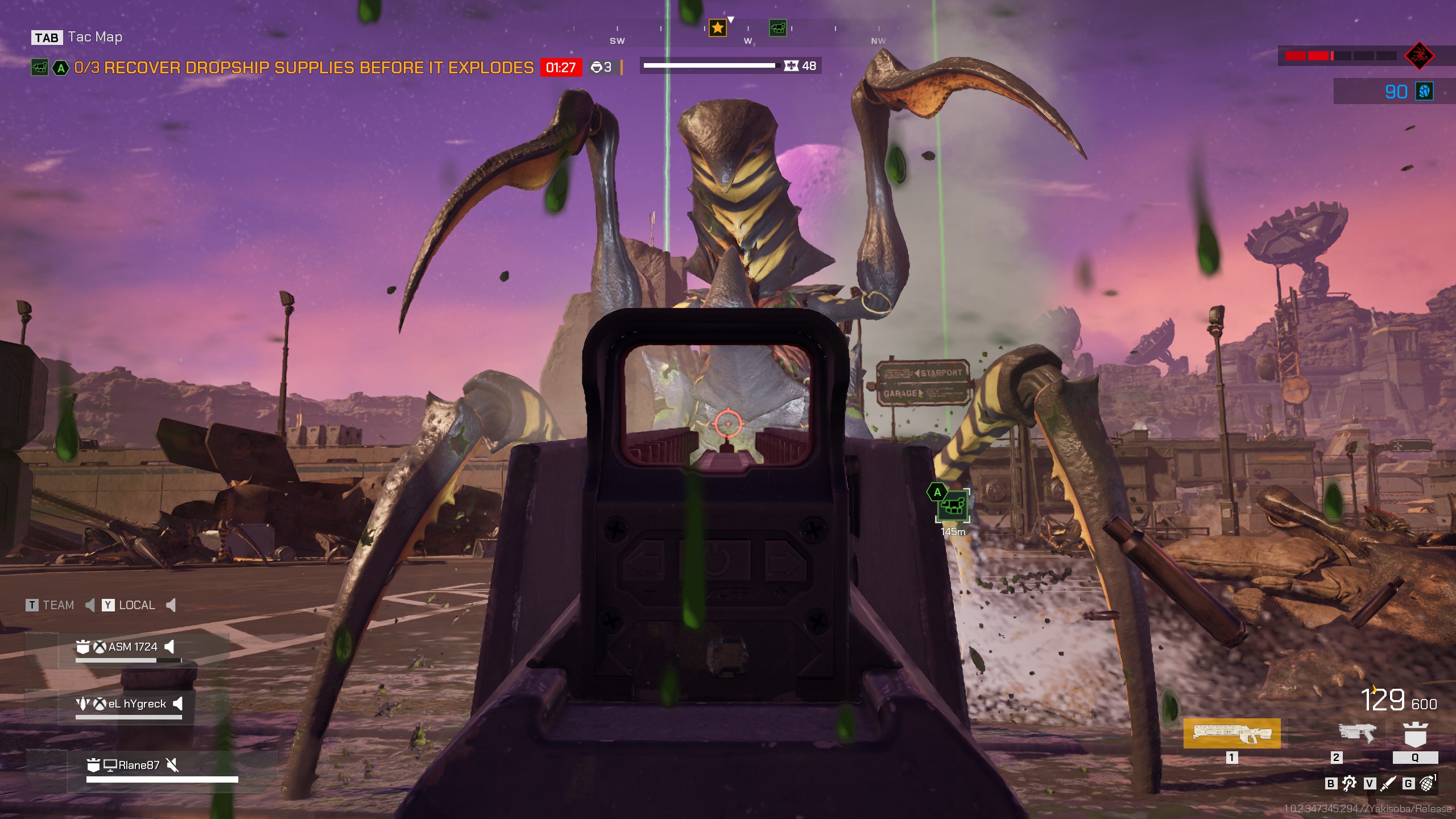
Extermination's main event is its 16-player cooperative missions, in which four squads of four players work together to withstand the arachnid menace for the glory of the Federation. These missions vary slightly in their structure, but they tend to last between 30 minutes and one hour, and usually involve building, then defending, a base.
If the idea of building a base with fifteen strangers sounds either tedious or intimidating to you, in my experience with Extermination it is neither. Bases are fully kitted out within minutes, as players work efficiently together to erect walls, place reinforced bunkers, situate ammo dumps, and station manned and automated gun turrets. It's a neat thing to watch in motion, and as a new player, watching how the pros do it is generally a good idea. The base building controls aren't terrible, but they're not exactly intuitive either, so learning how to effectively place the right pieces in the right places will likely take you a couple of rounds.
Once the base is constructed (or in some missions, while the base is under construction) the arachnids will start attacking. Combat is slower and less refined than most modern FPS games, but it still feels great to fill an encroaching arachnid with lead, especially if you find a class you jive with. Players can assume the role of snipers, grenadiers, and flamethrower-toting engineers, each of which have their own weapons and abilities. Personally, I found myself partial to the Guardian, who comes equipped with a heavy assault rifle with a large magazine as standard, and can deploy a metal ring-fortification around themselves at will. Not only does this provide cover from projectile-shooting bugs, it also temporarily stops arachnids in their tracks, which is extremely handy when trying to hold a position.
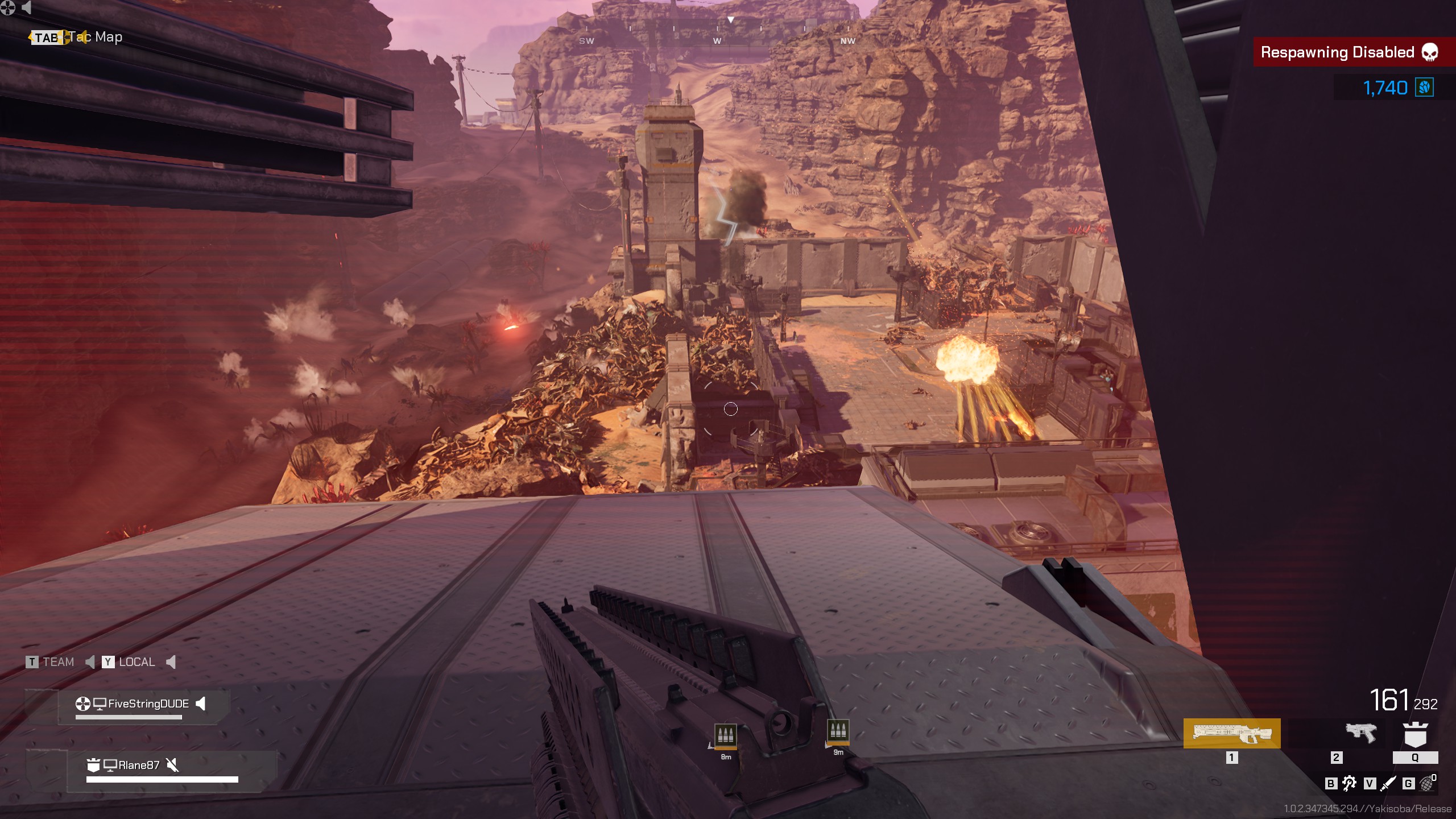
Extermination's most distinctive feature, however, is its corpse-permanence. Every arachnid that you kill will remain in situ on the battlefield. If you kill another arachnid in the same spot, it will lie on top of the previous one. Given the number of enemies the game vomits forth, you soon end up with huge piles of dead alien insects scattered across the battlefield.
This has a couple of implications, the first of which is practical. Corpses can pile up to the point where they obscure your line of sight, or even create a ramp for other bugs to scale your defences. Hence, it's prudent to clear these biological obstacles using explosives, adding another tactical twist to base management alongside making repairs and reloading turrets between attacks.
Corpses can pile up to the point where they obscure your line of sight, or even create a ramp for other bugs to scale your defences
The other effect is that it makes the battlefield look rad as hell. Between the corpse permanence and the constant construction and destruction of its bases, Extermination has the most dynamic battlefields I've experienced in a multiplayer FPS for a while. There are times when you'll look out and see a vast sea of dead bugs, other players clambering over them to get to some distant objective. It's a sight that would go well with Adagio for Strings.
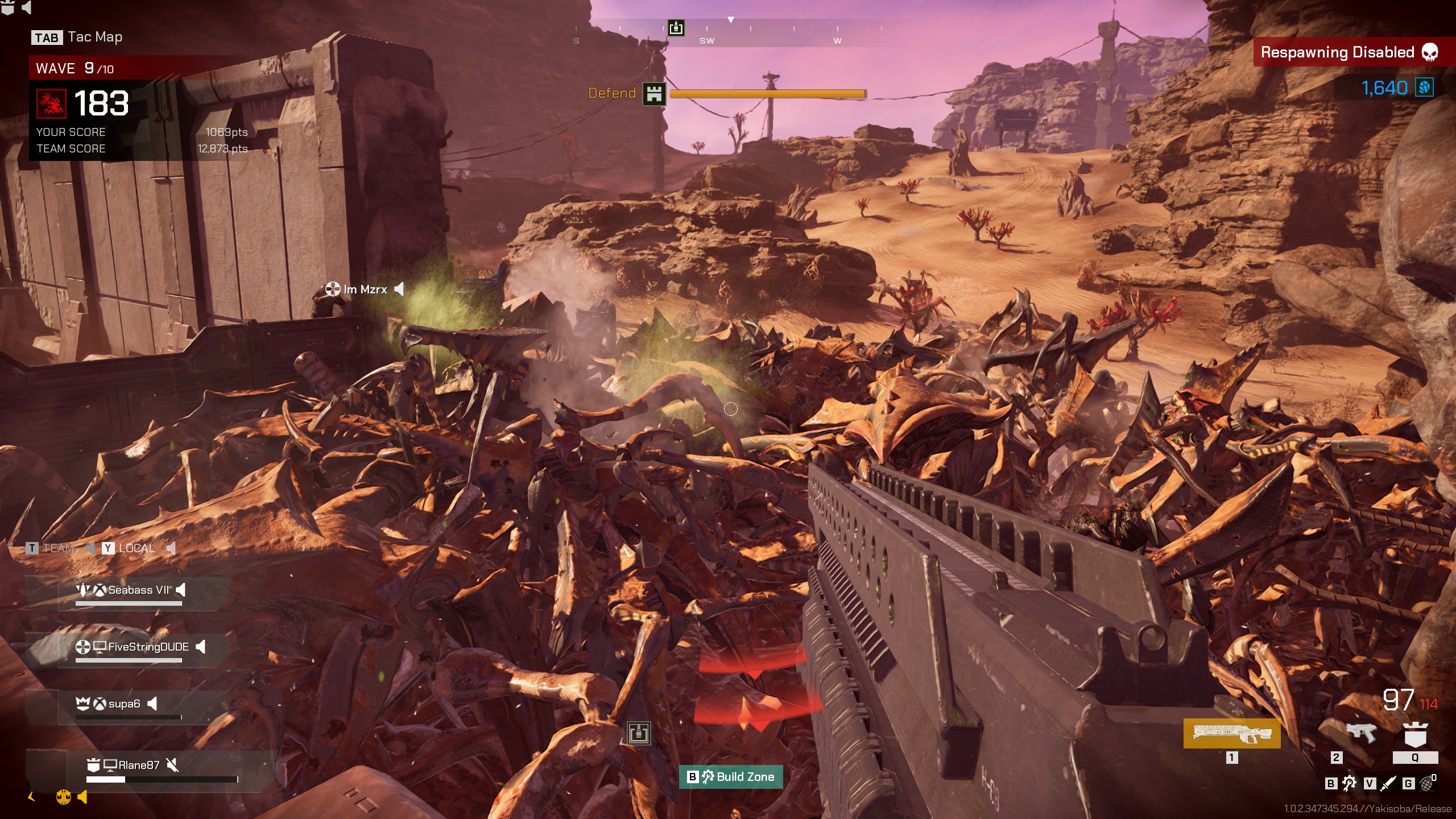
The scale Extermination plays also means your experience of a mission can be highly personal. You can spend the entire mission defending one corner of a base, or venture off to try and complete randomly appearing side missions. In a frantic last stand on the desert planet Valaka, I spent the whole latter half of the mission ferrying ammo to automated turrets as dozens of bugs battered the walls.
Likewise, Extermination leaves lots of room for emergent moments. I've defended a bug assault from the ramparts only for a blast of arachnid artillery to blow the wall out from under me, dropping me to the ground and leaving me fully exposed to the horde. Once I got knocked out of a base entirely, and had to frantically run around it to try to get back in, ending up trapped beneath a staircase while a gigantic Tiger Bug tried to gnaw my legs off with its massive pincer jaws. Every mission also ends with a frantic scramble to a nearby dropship, which is always great for last-minute acts of heroism or stupidity.
Often, Extermination feels less like Helldivers 2 and more like Planetside 2, insofar as how you feel like a small part of a much larger battle. This is particularly the case in missions that aren't straightforward tower defences, like 'AAS' mission, where you need to capture territory for your base before you build it, or 'ARC' missions, where you must venture out from a central point to gather resources for the base. The way these missions can split off into little adventures that ultimately feed back into the main event is quite novel and interesting.
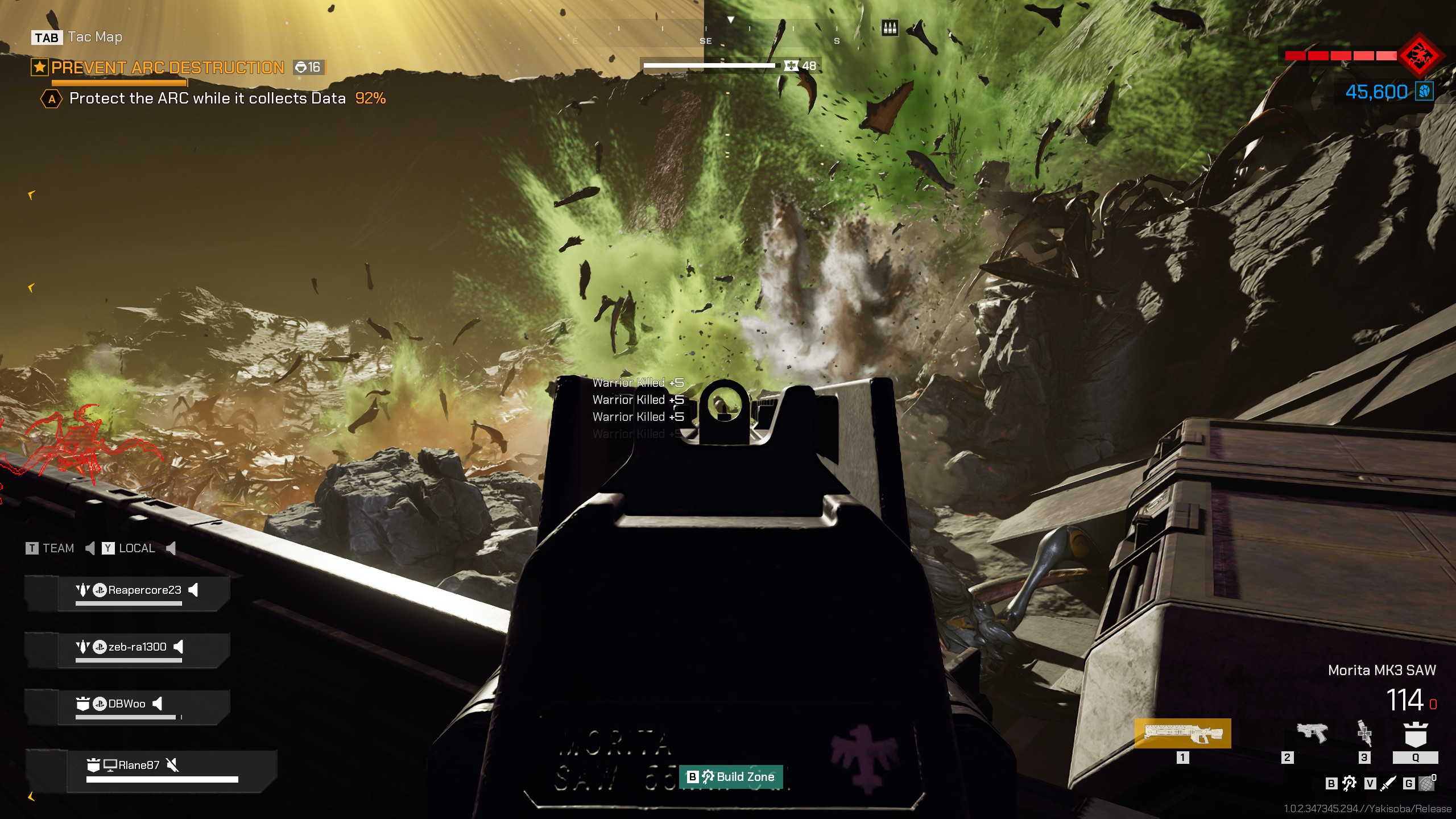
As you can probably tell, I'm quite fond of Extermination. But there is a price to be paid for all this. The whole experience needs a big whack of polish, from the feeling of character movement, to enemy death animation to stop them springing like a startled cat when the ragdoll physics kicks in. Certain game events are particularly undermined by the rough edges. Dropship arrivals, for example, should be cool as hell, but the way the ships judder downward like an elevator with a rusty cable spoils the immersion.
Even putting technical issues aside, by modern standards Extermination is quite an ugly game. Outside of the impressive corpse tech, the presentation is largely staid, while the texturing is muddy and often unsightly. Considering this, you'd expect it to run better than it does. Granted, I'm using a somewhat outdated 2080 Super, but even on medium settings there were moments when the framerate plummeted for no obvious reason.
Outside of the impressive corpse tech, the presentation is largely staid, while the texturing is muddy and often unsightly
Continuing the subject of style, although Extermination replicates the iconography of Starship Troopers well enough, it doesn't really embrace the tone of Verhoeven's film. There are a couple of nice flourishes, such as the music and how every mission starts with a faux news report. But it's all very superficial, with no meaningful effort to capture the film's satirical essence, and certainly no attempt to elaborate upon it. Extermination focuses squarely on evoking the action scenes of Starship Troopers, and to its credit it does this pretty well.
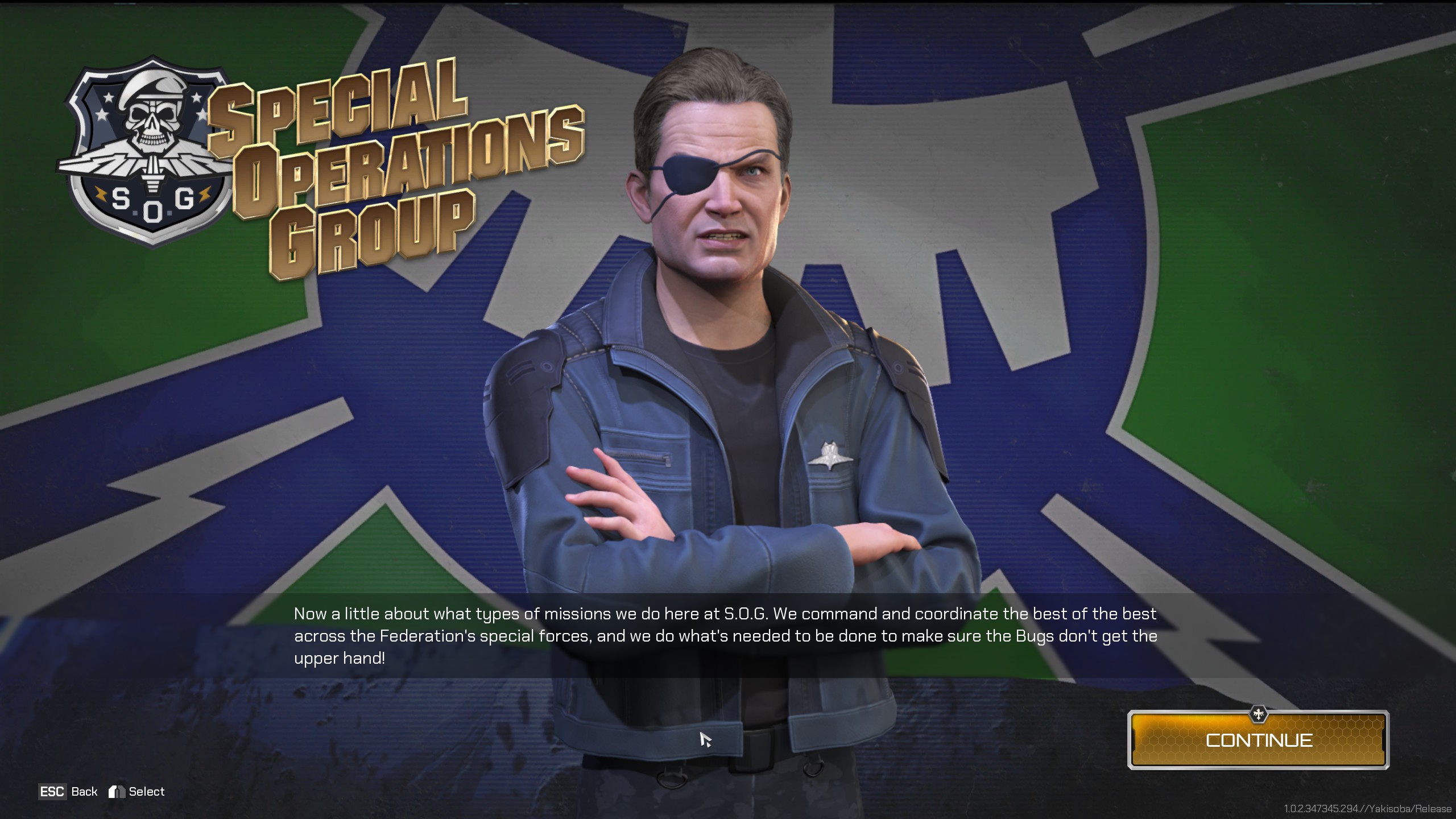
Only in multiplayer, however. Extermination's biggest letdown is the recently added solo "campaign". This sees you join a Special Operations Group overseen by Johnny Rico (voiced by Casper Van Dien) on a side-adventure comprising 25 missions. Unfortunately, these missions are terrible. They all take place in murky, seemingly randomly generated tunnels with basic objectives ripped from the multiplayer and little in the way of actual craft. Moreover, you're accompanied by some of the stupidest AI companions this side of Left4Dead 2. Honestly, it's a miracle they made it through boot camp. They constantly get stuck on or inside geometry, and whenever they have a close encounter with an arachnid, they start vibrating as if they're about to combust.
It's a wasted opportunity, and the way Extermination calls it a "tutorial" campaign feels like a cop-out, since the game already includes a basic tutorial. I'd much prefer a shorter, more bespoke campaign that properly integrated Rico into the experience, rather than just having him voice mission briefings and objective updates.
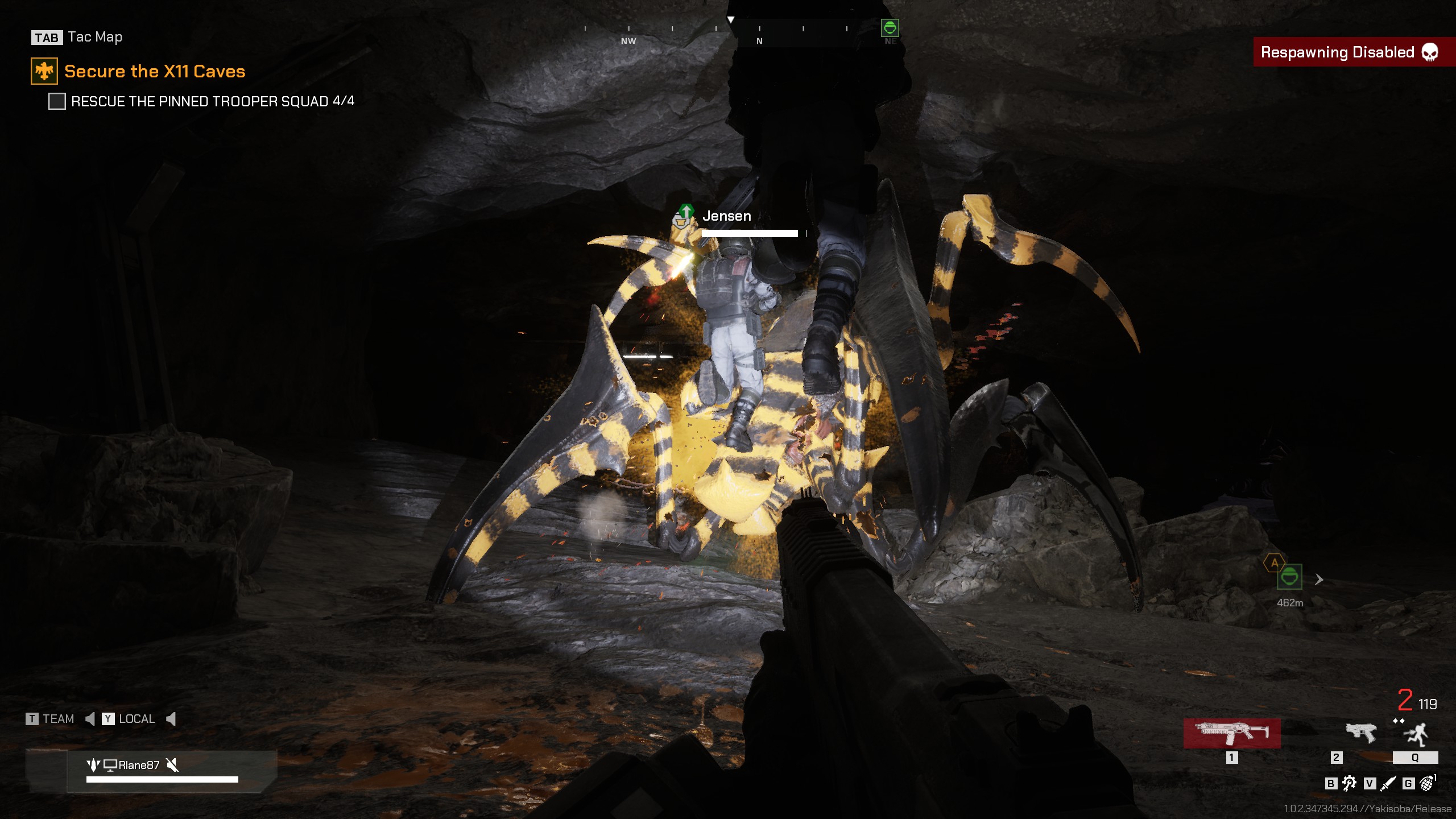
This isn't the only tacked-on feeling feature Extermination has added recently. Also new is the Galactic Front, a live-service style campaign with community objectives and its own evolving story. To participate, you need to be part of a Company (basically a guild) which can then create and complete its own missions that will contribute to the objective.
If this sounds familiar, that's because it's a much simpler version of Helldivers 2's Galactic War. Extermination's take on this is fine for what it is, but between this and the deeply underwhelming solo campaign, I fear Extermination lost confidence in its central concept somewhere along the early access road. Given the enormous success of Helldivers 2 and the connective tissue between the two games, it's understandable Offworld would want to ape it a little bit. But it's also a shame, because Extermination is best where it diverges from Arrowhead's work, and deserves to be judged and experienced on its own merits. Add more maps, modifiers and a heavy dose of refinement to Extermination's existing framework, and I reckon it would be a genuinely great multiplayer game. As it is, it's still a good one, but undeniably flawed, and dragged down by weak secondary features.







